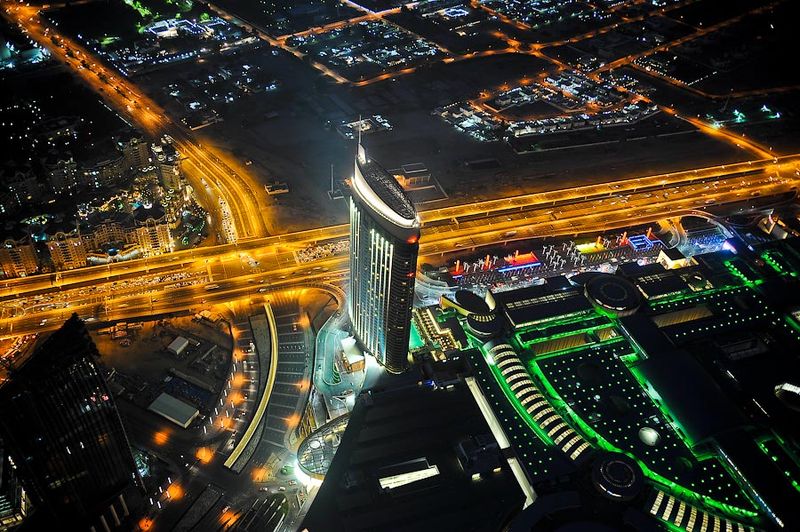|
|
Burj Khalifa, Burj Dubai, Skyscraper In Dubai, United Arab Emirates
|
Architecture and design
The tower is designed by Skidmore, Owings and Merrill, which also designed the Willis Tower (formerly the Sears Tower) in Chicago and the new One World Trade Center in New York City among numerous other famous high-rises. The building resembles the bundled tube form of the Willis Tower, but is not a bundle tube structure. Its design is reminiscent of Frank Lloyd Wright's vision for The Illinois, a mile high skyscraper designed for Chicago. According to Marshall Strabala, an SOM architect who worked on the building's design team, Burj Khalifa was designed based on the 73 floor Tower Palace Three, an all residential building in Seoul. In its early planning, Burj Khalifa was intended to be entirely residential.
Subsequent to the original design by Skidmore, Owings and Merrill, Emaar Properties chose Hyder Consulting to be the supervising engineer. Hyder was selected for its expertise in structural and MEP (mechanical, electrical and plumbing) engineering. Hyder Consulting's role was to supervise construction, certify SOM's design, and be the engineer and architect of record to the UAE authorities. Emaar Properties also engaged GHD, an international multidisciplinary consulting firm, to act as an independent verification and testing authority for concrete and steelwork.
The design of Burj Khalifa is derived from patterning systems embodied in Islamic architecture. According to the structural engineer, Bill Baker of SOM, the building's design incorporates cultural and historical elements particular to the region. The Y-shaped plan is ideal for residential and hotel usage, with the wings allowing maximum outward views and inward natural light. The design architect, Adrian Smith, has said the triple lobed footprint of the building was inspired by the flower Hymenocallis. The tower is composed of three elements arranged around a central core. As the tower rises from the flat desert base, setbacks occur at each element in an upward spiralling pattern, decreasing the cross section of the tower as it reaches toward the sky. There are 27 terraces in Burj Khalifa. At the top, the central core emerges and is sculpted to form a finishing spire. A Y-shaped floor plan maximizes views of the Persian Gulf. Viewed from above or from the base, the form also evokes the onion domes of Islamic architecture. During the design process, engineers rotated the building 120 degrees from its original layout to reduce stress from prevailing winds. At its tallest point, the tower sways a total of 1.5 m (4.9 ft).
|
|









